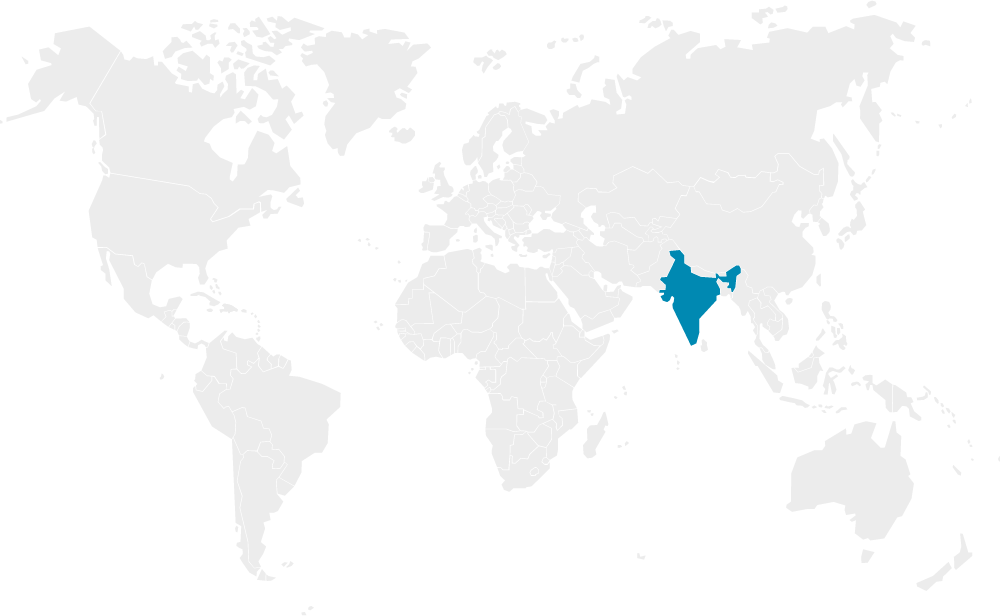Open Data for Developing Economies Case Studies
India’s ESMI
Civil Society Complementing Government Data in an Open Manner
by Michael P. Canares, Anirudh Dinesh, Andrew Young and Stefaan Verhulst
Reference
1 . Project conducted in collaboration with the Web Foundation, United States Agency for International Development (USAID), and the Mobile Solutions, Technical Assistance and Research (mSTAR) program at FHI 360.
2 Special thanks to Akash Kapur who provided crucial editorial support for this case study, and to the peer reviewers who provided input on a pre-published draft.
3 Energy Access Database, World Energy Outlook http://www.worldenergyoutlook.org/resources/energydevelopment/energyaccessdatabase/
4 “Using technology for evidence based feedback to ensure quality electricity access”, Electricity Supply Monitoring Initiative (ESMI), Prayas Energy Group, https://d2oc0ihd6a5bt.cloudfront.net/wp-content/uploads/sites/837/2016/04/2-Shantanu-Dixit.pdf
5 Martin, “India’s Energy Crisis”, MIT Technology Review, 2015, https://www.technologyreview.com/s/542091/indias-energy-crisis/
6 “World Energy Outlook 2015 Factsheet”, International Energy Agency, 2015.
7 “Rural Electrification: Status of Rural Electrification (RE) under DDUGY, Ministry of Power, Government of India, http://powermin.nic.in/content/rural-electrification
8 “India’s Power Network Breaks Down”, The Wall Street Journal”, 2012, https://www.wsj.com/articles/SB10000872396390444405804577560413178678898
9 “Vital Stats: Overview of issues in the power sector in India”, PRS Legislative Research, 2015, http://www.prsindia.org/administrator/uploads/general/1449060077_Vital%20Stats%20-%20power%20sector.pdf
10 “Power Quality- What is it?”, HSB.com, https://www.hsb.com/TheLocomotive/PowerQualityIsImportantHereisWhatYouCanDo.aspx
11 . Wärtsilä, The Real Cost of Power, Wärtsilä, 2009, http://www.wartsila.com/docs/default-source/Power-Plants-documents/downloads/White-papers/asia-australia-middle-east/The-Real-Cost-of-Power.pdf?sfvrsn=2.
12 “Impact of Power Quality on Indian Industries”, Asia Power Quality Initiative, http://apqi.org/download/delhi/01-dr-bhuvaneswari.pdf
13 “White Paper: Power Quality Regulations in India”, Forum of Regulators (FOR), India, 2015, http://www.forumofregulators.gov.in/Data/Achievements/apqi.pdf
14 . Voltage variation limit, simply put, is the maximum allowable value for voltage value to fluctuate.
15 “IEEE Std 1159-2009- IEEE Recommended Practice for Monitoring Electric Power Quality”, IEEE, 2009, http://ieeexplore.ieee.org/document/5154067/
16 “Open Government Data Platform India”, https://data.gov.in
17 “Open Data Barometer”, 2015, http://opendatabarometer.org/data-explorer/?_year=2015&indicator=ODB
18 . “India,” Global Open Data Index, Open Knowledge International, http://index.okfn.org/place/india/.
19 Central Electricity Regulatory Commission, Government of India, http://opendatabarometer.org/data-explorer/?_year=2015&indicator=ODB
20 “Power Sector at a glance- All India”, Ministry of Power, Government of India, http://powermin.nic.in/content/power-sector-glance-all-india
21 https://www.powergridindia.com/
22 . Lori Aniti, “India Aims to Reduce High Electricity Transmission and Distribution System Losses,” Today in Energy, October 22, 2015, http://www.eia.gov/todayinenergy/detail.php?id=23452.
23 . See the Prayas website, http://www.prayaspune.org/peg/index.php.
24 . See the ESMI website, http://www.watchyourpower.org/.
25 “Electricity Generation and Supply”, Research Areas, Prayas Energy Group, http://www.prayaspune.org/peg/research-areas/electricity-generation-supply.html
26 “Using technology for evidence based feedback to ensure quality electricity access”, Electricity Supply Monitoring Initiative (ESMI), Prayas Energy Group, https://d2oc0ihd6a5bt.cloudfront.net/wp-content/uploads/sites/837/2016/04/2-Shantanu-Dixit.pdf
27 . Electricity Supply Monitoring Initiative, “Using Technology for Evidence-Based Feedback to Ensure Quality Electricity Access,” Presentation at ACEF, June 2016, https://d2oc0ihd6a5bt.cloudfront.net/wp-content/uploads/sites/837/2016/04/2-Shantanu-Dixit.pdf.
28 Interview with Shweta Kulkarni, Research Associate, Prayas Energy Group- Pune.
29 Prayas (Energy Group), “Electricity Supply Monitoring Initiative (ESMI),” March 2015, http://www.prayaspune.org/peg/publications/item/61-electricity-supply-monitoring-initiative.html.
30 The Electricity Act, 2003, http://www.cercind.gov.in/Act-with-amendment.pdf
31 The Energy and Resources Institute (TERI), http://www.teriin.org/about-teri
32 Ministry of Power datasets, data.gov.in, https://data.gov.in/ministrydepartment/ministry-power
33 Central Electricity Authority datasets, data.gov.in, https://data.gov.in/ministrydepartment/central-electricity-authority
34 http://watchyourpower.org
35 . See for example, Manasi Mathkar, “Making Power Supply Data a Tool for Progress,” India Together, May 6, 2015, http://indiatogether.org/a-easy-to-use-interface-to-view-ones-power-supply-and-consumption-information-via-a-simple-electricity-supply-monitor-esm-environment.
36 . “Minutes of the Forty-Eighth Meeting of Forum of Regulators (FOR) Held at New Delhi,” June 10-11, 2015, http://www.forumofregulators.gov.in/Data/Meetings/Minutes/48.pdf.
37 . Suggestions and Objections from Prayas regarding the Maharashtra State Electricity Distribution Company Limited’s Petition for Multi Year Tariff for FY 2013-14 to FY 201516)
38 . Debjoy Sengupta, “Contrary to Government’s Claims, Small Towns, Rural Areas Still Suffer from Power Outages,” Economic Times: Energy World, July 26, 2016, http://energy.economictimes.indiatimes.com/news/power/contrary-to-governments-claims-small-towns-rural-areas-still-suffer-from-power-outages/53393538.
39 “PUNJAB STATE ELECTRICITY REGULATORY COMMISSION SCO NO. 220-221, SECTOR 34-A, CHANDIGARH,” Order in Petition No.46 of 2013, http://www.pserc.nic.in/pages/Order%20in%20Petition%20No.46%20of%202013.pdf.
40 “India Smart Grid Forum Website Launched”, Press Information Bureau, Ministry of Power, Government of India, http://pib.nic.in/newsite/PrintRelease.aspx?relid=71397
41 “Vision Roadmap” National Smart Grid Mission, Ministry of Power, Government of India, http://www.nsgm.gov.in/upload/files/India-Smart-Grid-Vision-and-Roadmap_DSG.pdf
42 . India Smart Grid Forum, Smart Grid Vision and Roadmap for India, August 12, 2013, GOI, Ministry of Power, http://www.nsgm.gov.in/upload/files/India-Smart-Grid-Vision-and-Roadmap_DSG.pdf.



